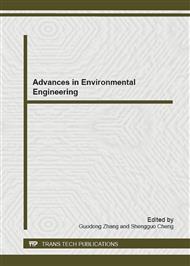p.3
p.9
p.14
p.23
p.27
p.32
p.36
p.40
p.44
A Comparative Research on Different Preparation Methods of Furfural Hydrogenation Non-Chromium Catalysts
Abstract:
Furfuryl alcohol is an important organic chemical material. The traditional catalysts of furfural hydrogenation to produce furfuryl alcohol contain Cr, which is harmful to people’s health and causes severe environmental pollution. Developing new highly active catalysts in furfuryl alcohol is of great practical significance. The progress of non-chrome catalysts for hydrogenation of furfural to produce furfuryl alcohol has been reviewed. Some environmental-friendly non-chrome catalysts, such as copper catalysts, CuO-CaO/SiO2 catalysts, Cu-Zn-Al catalysts, load Ni and ultra-fine Ni-B amorphous alloy catalysts, had been discussed and their preparations and structure characterizations were described. Some constructive strategies are presented for the research and applications of such catalysts.
Info:
Periodical:
Pages:
27-31
Citation:
Online since:
November 2012
Authors:
Price:
Сopyright:
© 2012 Trans Tech Publications Ltd. All Rights Reserved
Share:
Citation:


